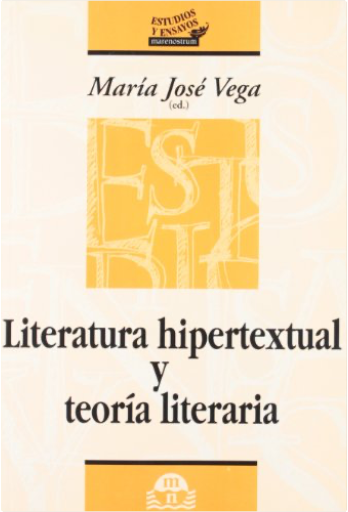 Writing Space: the Computer, Hypertext, and the History of WritingJay David Bolter Writing Space: the Computer, Hypertext, and the History of WritingJay David Bolter This book is a study of the computer as a new technology for reading and writing — a technology that may replace the printing press as our principal medium of symbolic communication. One of the main subjects of Writing Space is hypertext, a technique that allows scientists, scholars, and creative writers to construct texts that interact with the needs and desires of the reader. Bolter explores both the theory and practice of hypertext, demonstrating that the computer as hypertext represents a new stage in the long history of writing, one that has far-reaching implications in the fields of human and artificial intelligence, cognitive science, philosophy, semiotics, and literary theory.
Through a masterful integration of introductory, historical, illustrative, and theoretical material as well as an accompanying diskette containing a sample of hypertextual writing, Bolter supports his claim that the computer will carry literacy into a new age — the age of electronic text that will emerge from the "age of print that is now passing." His reflections on literacy in contemporary culture lead him to a compelling conclusion: ironically, cultural literacy is becoming almost synonymous with computer literacy. 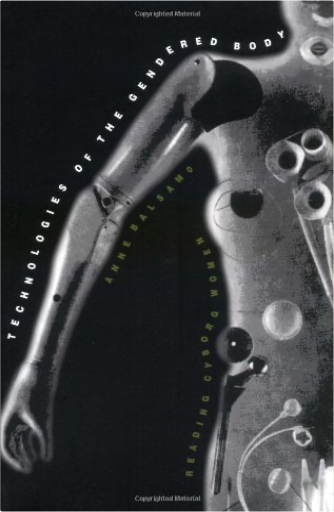 Technologies of the Gendered Body: Reading Cyborg WomenAnne Balsamo Technologies of the Gendered Body: Reading Cyborg WomenAnne Balsamo This book takes the process of "reading the body" into the fields at the forefront of culture—the vast spaces mapped by science and technology—to show that the body in high-tech is as gendered as ever. From female body building to virtual reality, from cosmetic surgery to cyberpunk, from reproductive medicine to public health policies to TV science programs, Anne Balsamo articulates the key issues concerning the status of the body for feminist cultural studies in a postmodern world.
Technologies of the Gendered Body combines close readings of popular texts—such as Margaret Atwood’s novel The Handmaid’s Tale, the movie Pumping Iron II: The Women, cyberpunk magazines, and mass media—with analyses of medical literature, public policy documents, and specific technological practices. Balsamo describes the ways in which certain biotechnologies are ideologically shaped by gender considerations and other beliefs about race, physical abilities, and economic and legal status. She presents a view of the conceptual system that structures individuals’ access to and participation in these technologies, as well as an overview of individuals’ rights and responsibilities in this sometimes baffling area. Examining the ways in which the body is gendered in its interactions with new technologies of corporeality, Technologies of the Gendered Body counters the claim that in our scientific culture the material body has become obsolete. With ample evidence that the techno-body is always gendered and marked by race, this book sets the stage for a renewed feminist engagement with contemporary technological narratives. 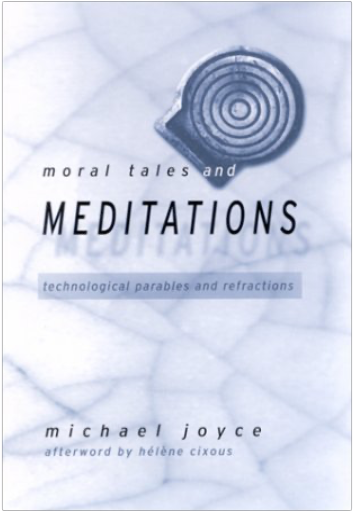 Moral Tales and Meditations: Technological Parables and RefractionsMichael Joyce Moral Tales and Meditations: Technological Parables and RefractionsMichael Joyce Novelist, cyber-theorist, and widely acclaimed hypertext fiction writer Michael Joyce weaves an evocative and provocative set of brief essays and short parable-like fictions into a compelling collection of meditations on how technology and new media affect our culture and everyday lives. Taken together, these pieces present a writer's reflections on a life of sudden changes at the edge of an uncertain future. They continue Joyce's effort to construct what in previous collections he has called "theoretical narratives." Here, however, Joyce turns from reflections to what he terms "refractions," alluding to the turning or bending a wave undergoes when it passes from one medium into another of different density. Through these refractions, he formulates an understanding of the wave of change we face as human beings in a multimediated age.  Human-Built World: How to Think about Technology and CultureThomas P. Hughes Human-Built World: How to Think about Technology and CultureThomas P. Hughes To most people, technology has been reduced to computers, consumer goods, and military weapons; we speak of "technological progress" in terms of RAM and CD-ROMs and the flatness of our television screens. In Human-Built World, thankfully, Thomas Hughes restores to technology the conceptual richness and depth it deserves by chronicling the ideas about technology expressed by influential Western thinkers who not only understood its multifaceted character but who also explored its creative potential.
Hughes draws on an enormous range of literature, art, and architecture to explore what technology has brought to society and culture, and to explain how we might begin to develop an "ecotechnology" that works with, not against, ecological systems. From the "Creator" model of development of the sixteenth century to the "big science" of the 1940s and 1950s to the architecture of Frank Gehry, Hughes nimbly charts the myriad ways that technology has been woven into the social and cultural fabric of different eras and the promises and problems it has offered. Thomas Jefferson, for instance, optimistically hoped that technology could be combined with nature to create an Edenic environment; Lewis Mumford, two centuries later, warned of the increasing mechanization of American life.
Such divergent views, Hughes shows, have existed side by side, demonstrating the fundamental idea that "in its variety, technology is full of contradictions, laden with human folly, saved by occasional benign deeds, and rich with unintended consequences." In Human-Built World, he offers the highly engaging history of these contradictions, follies, and consequences, a history that resurrects technology, rightfully, as more than gadgetry; it is in fact no less than an embodiment of human values. 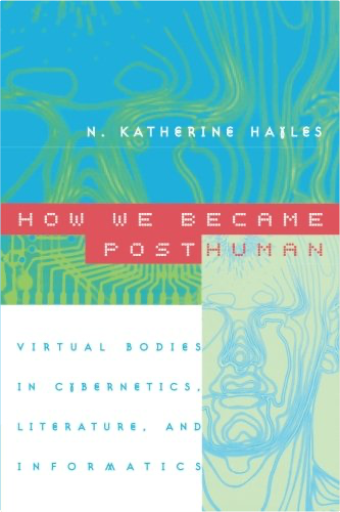 How We Became Posthuman: Virtual Bodies in Cybernetics, Literature, and InformaticsN. Katherine Hayles How We Became Posthuman: Virtual Bodies in Cybernetics, Literature, and InformaticsN. Katherine Hayles In this age of DNA computers and artificial intelligence, information is becoming disembodied even as the "bodies" that once carried it vanish into virtuality. While some marvel at these changes, envisioning consciousness downloaded into a computer or humans "beamed" Star Trek-style, others view them with horror, seeing monsters brooding in the machines. In How We Became Posthuman, N. Katherine Hayles separates hype from fact, investigating the fate of embodiment in an information age.
Hayles relates three interwoven stories: how information lost its body, that is, how it came to be conceptualized as an entity separate from the material forms that carry it; the cultural and technological construction of the cyborg; and the dismantling of the liberal humanist "subject" in cybernetic discourse, along with the emergence of the "posthuman."
Ranging widely across the history of technology, cultural studies, and literary criticism, Hayles shows what had to be erased, forgotten, and elided to conceive of information as a disembodied entity. Thus she moves from the post-World War II Macy Conferences on cybernetics to the 1952 novel Limbo by cybernetics aficionado Bernard Wolfe; from the concept of self-making to Philip K. Dick's literary explorations of hallucination and reality; and from artificial life to postmodern novels exploring the implications of seeing humans as cybernetic systems.
Although becoming posthuman can be nightmarish, Hayles shows how it can also be liberating. From the birth of cybernetics to artificial life, How We Became Posthuman provides an indispensable account of how we arrived in our virtual age, and of where we might go from here. 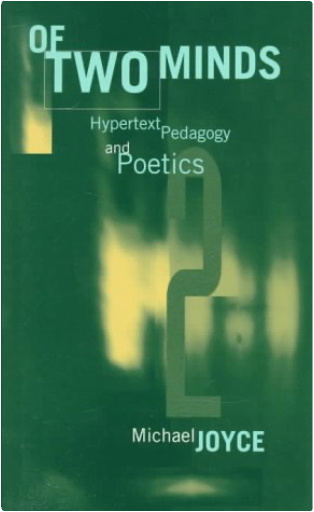 Of Two Minds: Hypertext Pedagogy and PoeticsMichael Joyce Of Two Minds: Hypertext Pedagogy and PoeticsMichael Joyce In Of Two Minds, noted hypertext novelist and writing teacher Michael Joyce explores the new technologies, mediums, and modalities for teaching and writing, ranging from interactive multimedia to virtual reality. As author of Afternoon: A Story, which the New York Times Book Review termed "the most widely read, quoted, and critiqued of all hypertext narratives," and co-developer of Storyspace, an innovative hypertext software acclaimed for offering new kinds of artistic expression, he is uniquely well qualified to explore this stimulating topic.
The essays comprise what Joyce calls "theoretical narratives," woven from e-mail messages, hypertext "nodes," and other kinds of electronic text that move nomadically from one occasion or perspective to another, between the poles of art and instruction , teaching and writing. The nomadic movement of ideas is made effortless by the electronic medium, which makes it easy to cross borders (or erase them) with the swipe of a mouse, and which therefore challenges our notions of intellectual and artistic borders.
Joyce makes it clear that we are not just the natural heirs but, through our visions, the architects of new technologies that promise to enact our visions as much as change them. The collection summons writing from artists, poets, teachers, scientists, and feminist thinkers, and in so doing builds on notions of human possibility as a basis for the broadest kind of conversation in what Joyce deems our increasingly multiple, polymorphous, and polylogous culture.
"Weaving between theoretical speculations, reports of actual classroom usage, polemical addresses, and a rich web of allusions, Of Two Minds strongly makes the case that hypertext creates a topography of textuality that requires new mod es of thinking about texts." —N. Katherine Hayles, University of California, Los Angeles
A volume in our Studies in Literature and Science series.
Michael Joyce is Randolph Distinguished Visiting Professor of English, Vassar College. 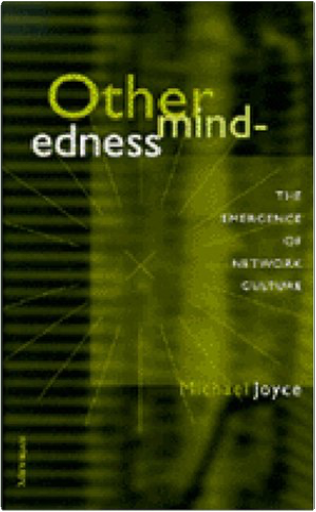 Othermindedness: The Emergence of Network CultureMichael Thomas Joyce Othermindedness: The Emergence of Network CultureMichael Thomas Joyce Michael Joyce's new collection continues to examine the connections between the poles of art and instruction, writing and teaching in the form of what Joyce has called theoretical narratives, pieces that are both narratives of theory and texts in which theory often takes the form of narrative. His concerns include hypertext and interactive fiction, the geography of cyberspace, and interactive film, and Joyce here searches out the emergence of network culture in spaces ranging from the shifting nature of the library to MOOs and other virtual spaces to life along a river.
While in this collection Joyce continues to be one of our most lyrical, wide-ranging, and informed cultural critics and theorists of new media, his essays exhibit an evolving distrust of unconsidered claims for newness in the midst of what Joyce calls "the blizzard of the next," as well as a recurrent insistence upon grounding our experience of the emergence of network culture in the body.
Michael Joyce is Associate Professor of English, Vassar College. He is author of a number of hypertext fictions on the web and on disk, most notably Afternoon: A Story.
His previous books are Of Two Minds: Hypertext Pedagogy and Poetics and Moral Tale and Meditations: Technological Parables and Refractions.  The Mythical Man-Month: Essays on Software Engineering, Anniversary EditionFrederick P. Brooks Jr. The Mythical Man-Month: Essays on Software Engineering, Anniversary EditionFrederick P. Brooks Jr. Few books on software project management have been as influential and timeless as The Mythical Man-Month. With a blend of software engineering facts and thought-provoking opinions, Fred Brooks offers insight for anyone managing complex projects. These essays draw from his experience as project manager for the IBM System/360 computer family and then for OS/360, its massive software system. Now, 20 years after the initial publication of his book, Brooks has revisited his original ideas and added new thoughts and advice, both for readers already familiar with his work and for readers discovering it for the first time.
The added chapters contain (1) a crisp condensation of all the propositions asserted in the original book, including Brooks' central argument in The Mythical Man-Month: that large programming projects suffer management problems different from small ones due to the division of labor; that the conceptual integrity of the product is therefore critical; and that it is difficult but possible to achieve this unity; (2) Brooks' view of these propositions a generation later; (3) a reprint of his classic 1986 paper "No Silver Bullet"; and (4) today's thoughts on the 1986 assertion, "There will be no silver bullet within ten years."  Making the World Work Better: The Ideas That Shaped a Century and a CompanyKevin Maney, Steve Hamm, Jeffrey O'Brien Making the World Work Better: The Ideas That Shaped a Century and a CompanyKevin Maney, Steve Hamm, Jeffrey O'Brien Thomas J Watson Sr’s motto for IBM was THINK, and for more than a century, that one little word worked overtime. In Making the World Work Better: The Ideas That Shaped a Century and a Company , journalists Kevin Maney, Steve Hamm, and Jeffrey M. O’Brien mark the Centennial of IBM’s founding by examining how IBM has distinctly contributed to the evolution of technology and the modern corporation over the past 100 years.
The authors offer a fresh analysis through interviews of many key figures, chronicling the Nobel Prize-winning work of the company’s research laboratories and uncovering rich archival material, including hundreds of vintage photographs and drawings. The book recounts the company’s missteps, as well as its successes. It captures moments of high drama – from the bet-the-business gamble on the legendary System/360 in the 1960s to the turnaround from the company’s near-death experience in the early 1990s.
The authors have shaped a narrative of discoveries, struggles, individual insights and lasting impact on technology, business and society. Taken together, their essays reveal a distinctive mindset and organizational culture, animated by a deeply held commitment to the hard work of progress. IBM engineers and scientists invented many of the building blocks of modern information technology, including the memory chip, the disk drive, the scanning tunneling microscope (essential to nanotechnology) and even new fields of mathematics. IBM brought the punch-card tabulator, the mainframe and the personal computer into the mainstream of business and modern life. IBM was the first large American company to pay all employees salaries rather than hourly wages, an early champion of hiring women and minorities and a pioneer of new approaches to doing business—with its model of the globally integrated enterprise. And it has had a lasting impact on the course of society from enabling the US Social Security System, to the space program, to airline reservations, modern banking and retail, to many of the ways our world today works.
The lessons for all businesses – indeed, all institutions – are powerful: To survive and succeed over a long period, you have to anticipate change and to be willing and able to continually transform. But while change happens, progress is deliberate. IBM – deliberately led by a pioneering culture and grounded in a set of core ideas – came into being, grew, thrived, nearly died, transformed itself… and is now charting a new path forward for its second century toward a perhaps surprising future on a planetary scale. 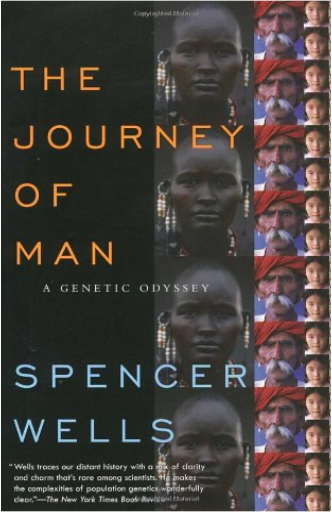 The Journey of Man: A Genetic OdysseySpencer Wells The Journey of Man: A Genetic OdysseySpencer Wells Around 60,000 years ago, a man—genetically identical to us—lived in Africa. Every person alive today is descended from him. How did this real-life Adam wind up as the father of us all? What happened to the descendants of other men who lived at the same time? And why, if modern humans share a single prehistoric ancestor, do we come in so many sizes, shapes, and races?
Examining the hidden secrets of human evolution in our genetic code, Spencer Wells reveals how developments in the revolutionary science of population genetics have made it possible to create a family tree for the whole of humanity. Replete with marvelous anecdotes and remarkable information, from the truth about the real Adam and Eve to the way differing racial types emerged, The Journey of Man is an enthralling, epic tour through the history and development of early humankind. |
 Writing Space: the Computer, Hypertext, and the History of WritingJay David Bolter
Writing Space: the Computer, Hypertext, and the History of WritingJay David Bolter  Technologies of the Gendered Body: Reading Cyborg WomenAnne Balsamo
Technologies of the Gendered Body: Reading Cyborg WomenAnne Balsamo  Moral Tales and Meditations: Technological Parables and RefractionsMichael Joyce
Moral Tales and Meditations: Technological Parables and RefractionsMichael Joyce  Human-Built World: How to Think about Technology and CultureThomas P. Hughes
Human-Built World: How to Think about Technology and CultureThomas P. Hughes  How We Became Posthuman: Virtual Bodies in Cybernetics, Literature, and InformaticsN. Katherine Hayles
How We Became Posthuman: Virtual Bodies in Cybernetics, Literature, and InformaticsN. Katherine Hayles  Of Two Minds: Hypertext Pedagogy and PoeticsMichael Joyce
Of Two Minds: Hypertext Pedagogy and PoeticsMichael Joyce  Othermindedness: The Emergence of Network CultureMichael Thomas Joyce
Othermindedness: The Emergence of Network CultureMichael Thomas Joyce  The Mythical Man-Month: Essays on Software Engineering, Anniversary EditionFrederick P. Brooks Jr.
The Mythical Man-Month: Essays on Software Engineering, Anniversary EditionFrederick P. Brooks Jr.  Making the World Work Better: The Ideas That Shaped a Century and a CompanyKevin Maney, Steve Hamm, Jeffrey O'Brien
Making the World Work Better: The Ideas That Shaped a Century and a CompanyKevin Maney, Steve Hamm, Jeffrey O'Brien  The Journey of Man: A Genetic OdysseySpencer Wells
The Journey of Man: A Genetic OdysseySpencer Wells  Made with Delicious Library
Made with Delicious Library
